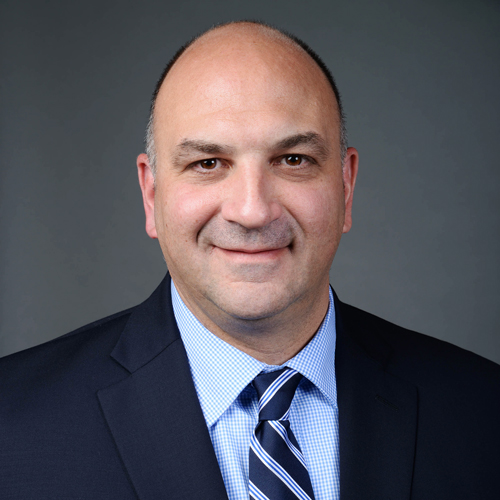Just four years ago, Tom Walsh of Under Armour spoke to American Builders Quarterly about his company’s 100 stores in the United States. Today, the sports retailer has more than 450 locations worldwide.
At that time, Walsh was a director of retail store development. Now, he’s vice president of global store development. In his new role, Walsh is standardizing design and build guidelines and processes, rolling out a new concept store, and implementing new methods to support the athletic-apparel giant’s ongoing global expansion.
Although Under Armour (UA) is more than 20 years old, a prolonged growth period has recently made the brand ubiquitous. Annual revenue—now around $5 billion—has grown 30 percent per year since 2010. The company has acquired MapMyFitness, MyFitnessPal, and Endomondo. Additionally, UA has inked endorsement deals with A-listers such as Tom Brady, Bryce Harper, Misty Copeland, Jordan Spieth, and Michael Phelps. UA made waves in 2013, when CEO Kevin Plank lured NBA superstar Stephen Curry from rival Nike. Since 2015, sales of the UA Curry shoe have jumped 350 percent.
With the company firing on all cylinders, Walsh is busier than ever before. Since footwear, youth, and women’s categories are climbing, he’s opened specialty stores in North America and is expanding the strategy to other continents. Since 2013, Walsh has spent all of his time on store development. His team introduced a new Brand House concept in Baltimore in 2013 and is now taking the design to Europe, Latin America, Australia, and Asia.
To execute in the high-volume atmosphere, Walsh must be precise. At press time, Under Armour was scheduled to open 41 Brand House locations throughout China in the third quarter of 2016.
“We still act like a start-up company and we’re moving very fast,” he says. “We have to have the processes, guidelines, and standards in place to steer us while we go.”
That means organizational development is especially important as Walsh creates the right teams in the right markets. In 2015, he and other leaders reorganized all UA store development personnel in North America into one team. Integrated wholesale and retail teams help leaders build and maintain vendor bases as they share resources, streamline processes, and increase standardization. Together, they create shared goals and priorities to get the best costs while delivering the best products to all stores in the region.

Additionally, Walsh is installing the systems necessary to help executives collect and leverage big data. Armed with accurate information, those leaders can make better decisions about current and expected store performance.
“We can access all the information we need with the click of a button so we can look at the business critically—and strategically—and know how to respond moment by moment in specific markets and specific stores,” he says.
Brand House locations are designed to showcase Under Armour’s top products and create an immersive retail experience. Thus, Walsh promotes collaboration between professionals in all departments, including marketing, visual merchandise, creative, and all other areas. In 2017, he’ll scale the strategy to all regions outside of North America.
At times, the aggressive and unending growth seems daunting, but Walsh says his team rises to the challenge.
“We’re here for the chance to do this . . . for the chance to put our fingerprint on something amazing,” he says.
Helping the company achieve measurable growth (UA has expanded from eight to 38 countries in just three years) is especially rewarding. In the frenetic atmosphere, he communicates often to ensure all teammates are aligned and motivated. Together, they work hard, celebrate wins, dissect mistakes, and move forward with a new goal always in sight.
Although it’s hard to predict what’s next, Walsh says he’s considering something big. By 2019, Under Armour could embark on a major overhaul of its flagship store design.
Flagship Stores
Under Armour’s larger, major-market flagship stores in cities such as Chicago, Shanghai, and Boston offer dynamic features and interactive elements such as 360-degree digital screens and the Optojump experience. The Optojump software zone designed in collaboration with Activate the Space, OptoGate, and Latitude features high-tech sensors that measure a player’s reaction, energy, and power before displaying the data on a large touchscreen leaderboard. In some locations, golf enthusiasts can test their putting skills on an innovative, programmable green that undulates to replicate major, well-known courses.

Brand House
Runners, sports fans, and serious athletes will find one thing when they enter an Under Armour Brand House: quality. The Brand House design is the retailer’s pinnacle presentation of full-priced products. These mall and storefront locations range from 5,000 to 30,000 square feet in North America and 2,500 to 6,500 square feet in other markets. The impressive units are home to digital elements (such as large LED screens) and a commitment to the company’s heritage. Under Armour often includes a localized assortment of products in each Brand House location and specialty sections like UA Hunt, UA Fish, and a wearables bar in some. Currently, North America has 14 such locations, including stores in New York City, Chicago, Los Angeles, and Orlando.
Factory House
With its Factory House design, Under Armour has created a light and open environment in which it offers a smaller portion of its overall catalogue. The 8,500- to 11,000-square-foot stores show off the brand, its footwear, and its athletes. Factory Houses are often more rural in nature, but share common design elements that feature a mix of woods and metals for finishes. They also include fewer digital and local components. Store zones are general in nature (think “training,” “basketball,” or “running”) to attract a wide array of athletes.


